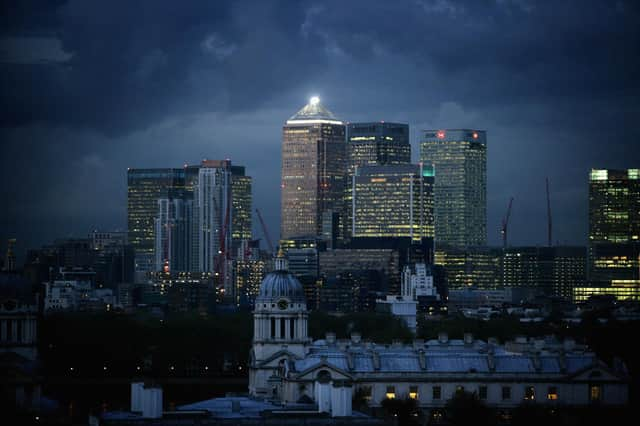People living outside major cities at greater risk from second wave


The research from scientists at the University of Sussex and the Francis Crick Institute tracks the daily Covid-19 death rates in major cities (London, New York, Madrid and Milan/Lombardy) of four hard-hit countries, and compares it with the corresponding nations as a whole.
They show that after lockdown - and indeed slightly before lockdown - death rates slowed more quickly in these early hit cities than in the rest of the population.
Advertisement
Hide AdAdvertisement
Hide AdThe researchers conclude this is because coronavirus infection became more widespread in these main metropolitan regions with the result that fewer people remained susceptible to infection and therefore Covid-19 was less able to spread.
The findings show that, for all four countries, the number of people remaining susceptible to the disease has been reduced more in early-hit cities due to the disease being seeded sooner there.
In spite of the heavy death toll in these cities, this difference in remaining susceptibility means that the other areas of each country would need to brace for a higher per capita death rate in the event of a second wave. Of the cities studied, this effect is particularly large in London.
The research also indicates that more people have had Covid-19 than was previously realised - these results are derived from the disease dynamics analysis rather than serology testing for antibodies or live infections, which are both prone to selection bias, under-representative population sampling and insufficient reliability.
The data shows that as many as 45% of Londoners could have been infected compared to just under 20% for the rest of the country.
In New York the findings reveal that 41% of the population could have had the infection compared to only 5% of the rest of the USA.
Professor Peter Krüger, a physicist and data scientist at the University of Sussex, said: “Our research compared daily death rates in London versus England as a whole, Madrid versus Spain, Lombardy versus Italy and New York versus the US.
"We show that in these cities, the death rate dropped more steeply than elsewhere after lockdown started.
Advertisement
Hide AdAdvertisement
Hide Ad"That is because in these early hit cities, the spread of coronavirus infection was already beginning to slow due to fewer people remaining susceptible.
"In effect, it is as if lockdown was introduced later in the cities than in the rest of their respective countries because the pandemic had reached a more advanced stage there.
“Taking the example of the UK, our research shows that had the UK government continued the lockdown period for longer, we could now have entered a containable situation, with infection rates lower than ten people per million.
"Combined with a working track and trace system, things could have been quite different.
"Instead, the UK is in a halfway house – where the disease was allowed to spread out of control but was also never brought fully back under control before lockdown was eased.
"Infection rates in England are still well above containment level, with a large number of people who remain at risk of infection.
“What’s more, a recent study commissioned by Patrick Vallance found that a second wave could be more deadly that the first.
"Our analysis indicates that this may be most true outside of the initially hard-hit cities.
Advertisement
Hide AdAdvertisement
Hide Ad"In contrast to previously published models, which do not factor in the effect of waning population susceptibility, our data suggest that projections which accommodate the effect of widespread exposure provide more granular, and likely more accurate, information.
He added: “The relaxation of distancing measures has slowed the decline in death rates.
"The UK government is aiming to keep the R rate just below 1, but this is not enough to contain the disease anytime soon.
"In fact, our results show that if we did not have the reduction of susceptibility that we have now, then with current easing of lockdown, we would not be seeing a decline in death rates but an increase instead.
“We also find that the recent slowdown of the decline in daily death rates in England clearly correlates with the lifting of lockdown.
"This slowdown in their decline is an important and potentially ominous trend; our findings indicate a need for close following of the numbers in coming months.”
A message from the Editor:
Thank you for reading this story on our website. While I have your attention, I also have an important request to make of you.
The dramatic events of 2020 are having a major impact on many of our advertisers - and consequently the revenue we receive. We are now more reliant than ever on you taking out a digital subscription to support our journalism.
Advertisement
Hide AdAdvertisement
Hide AdSubscribe to scotsman.com and enjoy unlimited access to Scottish news and information online and on our app.
Visit https://www.scotsman.com/subscriptions now to sign up.
By supporting us, we are able to support you in providing trusted, fact-checked content for this website.
Joy Yates
Editorial Director
Comments
Want to join the conversation? Please or to comment on this article.